Items
Tag
Integration
-
 Community of Song: Latin Music in Sharing Identity and Promoting Cultural Humility In this video, Colombian-Canadian singer-songwriter Gerry Rozo, through a retelling of his personal experiences, explores the role of music in cultural identity and community-building. He discusses his journey to Canada, the progression of his music career, his thoughts on cultural humility in Canadian society, and the ways in which he believes music can be a conduit for both the preservation of cultural identity and promotion of intercultural communication.
Community of Song: Latin Music in Sharing Identity and Promoting Cultural Humility In this video, Colombian-Canadian singer-songwriter Gerry Rozo, through a retelling of his personal experiences, explores the role of music in cultural identity and community-building. He discusses his journey to Canada, the progression of his music career, his thoughts on cultural humility in Canadian society, and the ways in which he believes music can be a conduit for both the preservation of cultural identity and promotion of intercultural communication. -
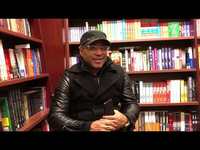 Creating Identity through Music This portrait demonstrates through various music clips, the integration of music and the importance in my partners life. Through being from a family of doctor’s in Havana, being the only musician enabled him to attend school for “free” in Cuba after being 1 of 6 chosen. Through participating in a program that enables him to arrive in Canada, and for a fee that is to be paid back to the government, is able to play concerts in Canada. He speaks about how the connection of music amongst different composers, no matter the sound or instrument, is a family and a connected language. He represents his identity through the constant listening and incorporating of music into his saxophone, drums, and piano gigs, alongside dj’ing at various clubs within London. Through tailoring his music towards the cultural crowd, and being able to adapt and fit in with the crowd with unique and current songs, brings forward the ability for various cultural groups to feel connected through the language of music. A universal language.
Creating Identity through Music This portrait demonstrates through various music clips, the integration of music and the importance in my partners life. Through being from a family of doctor’s in Havana, being the only musician enabled him to attend school for “free” in Cuba after being 1 of 6 chosen. Through participating in a program that enables him to arrive in Canada, and for a fee that is to be paid back to the government, is able to play concerts in Canada. He speaks about how the connection of music amongst different composers, no matter the sound or instrument, is a family and a connected language. He represents his identity through the constant listening and incorporating of music into his saxophone, drums, and piano gigs, alongside dj’ing at various clubs within London. Through tailoring his music towards the cultural crowd, and being able to adapt and fit in with the crowd with unique and current songs, brings forward the ability for various cultural groups to feel connected through the language of music. A universal language. -
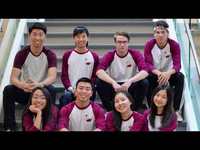 Negotiating a Bi-cultural Identity: An Interview with Andy Fuchigami The video features an interview with Andy Fuchigami, a Canadian-born member of the Japanese community in London. He grew up in a North American cultural environment, which resulted in him negotiating between two very different cultural identities. The video focuses on his feelings and experiences as a minority at school, leading to his struggle in accepting his Japanese identity. He explains how he avoided making Japanese friends, speaking in Japanese, and even trying to hide his Japanese name. However, Andy’s views have now totally shifted, and he has completely embraced his Japanese cultural identity, owing to some life experiences he has had. He went from having only Caucasian friends to making more Japanese friends, and he now actively participates in Japanese cultural activities in London.
Negotiating a Bi-cultural Identity: An Interview with Andy Fuchigami The video features an interview with Andy Fuchigami, a Canadian-born member of the Japanese community in London. He grew up in a North American cultural environment, which resulted in him negotiating between two very different cultural identities. The video focuses on his feelings and experiences as a minority at school, leading to his struggle in accepting his Japanese identity. He explains how he avoided making Japanese friends, speaking in Japanese, and even trying to hide his Japanese name. However, Andy’s views have now totally shifted, and he has completely embraced his Japanese cultural identity, owing to some life experiences he has had. He went from having only Caucasian friends to making more Japanese friends, and he now actively participates in Japanese cultural activities in London. -
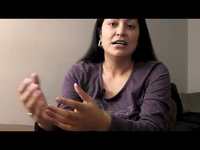 Memories in The Present Katherine Tibasosa, originally from Bogota, Colombia, moved to London, Ontario about a year ago with her husband and children. Katherine discusses the significance of weather, different regions in her country, and traditional foods. Moreover, since coffee is a very significant part of Colombian culture and Katherine's life, she opens up about how she keeps that aspect of her culture alive here in London. This video focuses on how she keeps the various aspects of her culture alive since moving from Colombia.
Memories in The Present Katherine Tibasosa, originally from Bogota, Colombia, moved to London, Ontario about a year ago with her husband and children. Katherine discusses the significance of weather, different regions in her country, and traditional foods. Moreover, since coffee is a very significant part of Colombian culture and Katherine's life, she opens up about how she keeps that aspect of her culture alive here in London. This video focuses on how she keeps the various aspects of her culture alive since moving from Colombia. -
 Integrating Japanese Culture into Canada In this portrait, Keiko Yano talks about the different aspects of the Japanese culture being adapted to Canada such as Girl’s Day and tea ceremony. She explains her participation in the community and her wish to keep the culture alive within her daughters. Keiko’s daughter, Erika, then briefly explains why she continues to learn the Japanese language. After that Keiko’s husband, Chris, describes the significance of Buddhism practices to him and discusses the activeness of the Japanese community in London. The portrait then ends with Keiko expressing her renewal of self and deeper appreciation in the Japanese culture by coming to Canada.
Integrating Japanese Culture into Canada In this portrait, Keiko Yano talks about the different aspects of the Japanese culture being adapted to Canada such as Girl’s Day and tea ceremony. She explains her participation in the community and her wish to keep the culture alive within her daughters. Keiko’s daughter, Erika, then briefly explains why she continues to learn the Japanese language. After that Keiko’s husband, Chris, describes the significance of Buddhism practices to him and discusses the activeness of the Japanese community in London. The portrait then ends with Keiko expressing her renewal of self and deeper appreciation in the Japanese culture by coming to Canada. -
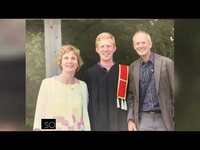 Raising Children in a German-Canadian Household: The Importance of Language and Culture This portrait follows the life of a German woman, Kordula, who immigrated to southwestern Ontario in 1999 in order to farm. The portrait specifically focuses on her journey in raising her children in a German-Canadian household. The portrait captures how she tried to preserve German traditions and the German language while raising her children amidst the backdrop of southwestern Ontario. It touches on why language is important to her and her children’s upbringing, indicating that it has allowed them to foster their German-Canadian identity. She also gives advice for families who have immigrated, and wish to continue teaching their children about their culture.
Raising Children in a German-Canadian Household: The Importance of Language and Culture This portrait follows the life of a German woman, Kordula, who immigrated to southwestern Ontario in 1999 in order to farm. The portrait specifically focuses on her journey in raising her children in a German-Canadian household. The portrait captures how she tried to preserve German traditions and the German language while raising her children amidst the backdrop of southwestern Ontario. It touches on why language is important to her and her children’s upbringing, indicating that it has allowed them to foster their German-Canadian identity. She also gives advice for families who have immigrated, and wish to continue teaching their children about their culture. -
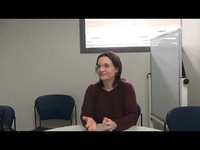 The German Democratic Republic: Before and Beyond This project is an interview with Dr. Nina Rosenbusch, a woman born in the German Democratic Republic (GDR). Rosenbusch was only a teenager when the Berlin Wall fell down in 1989 and so she is part of the generation of Germans who came into adulthood in the newly reunified Germany. This interview seeks to understand the legacy of the GDR’s culture for the citizens of modern Germany. In particular, the discussion focuses on the generation of Rosenbusch’s parents who only knew Germany as two separated states, unlike the generation of Rosenbusch’s grandparents who were able to remember a previously unified Germany. The involvement of the state in daily life is also discussed, with a focus on the German secret police service, called the Stasi. As Rosenbusch’s family did not protest against the state, they were not as affected as some individuals but were nonetheless limited in what they could do and say. Ultimately, the German Reunification was and is very popular in the former GDR, although there are still slight cultural differences and difficulties for those who lived most of their lives before 1989.
The German Democratic Republic: Before and Beyond This project is an interview with Dr. Nina Rosenbusch, a woman born in the German Democratic Republic (GDR). Rosenbusch was only a teenager when the Berlin Wall fell down in 1989 and so she is part of the generation of Germans who came into adulthood in the newly reunified Germany. This interview seeks to understand the legacy of the GDR’s culture for the citizens of modern Germany. In particular, the discussion focuses on the generation of Rosenbusch’s parents who only knew Germany as two separated states, unlike the generation of Rosenbusch’s grandparents who were able to remember a previously unified Germany. The involvement of the state in daily life is also discussed, with a focus on the German secret police service, called the Stasi. As Rosenbusch’s family did not protest against the state, they were not as affected as some individuals but were nonetheless limited in what they could do and say. Ultimately, the German Reunification was and is very popular in the former GDR, although there are still slight cultural differences and difficulties for those who lived most of their lives before 1989. -
 Cultural Connections: A Colombian's Journey to London In this video, we follow Alberto Alvarez as he journeys from Colombia to London. We will delve into his experience with being a new immigrant in Canada while also trying to understand what it is like to become part of a new culture/new community. Alberto then explains the process of reconnecting with his Colombian roots through the London community. Further, this project will seek to understand how culture and identity intertwine to create a distinct cultural identity that differs depending on who you are around at a specific point. Community Connections brings together music, image, and video to tell the story of a determined young man who grapples with his identity to become the bicultural community member he is today.
Cultural Connections: A Colombian's Journey to London In this video, we follow Alberto Alvarez as he journeys from Colombia to London. We will delve into his experience with being a new immigrant in Canada while also trying to understand what it is like to become part of a new culture/new community. Alberto then explains the process of reconnecting with his Colombian roots through the London community. Further, this project will seek to understand how culture and identity intertwine to create a distinct cultural identity that differs depending on who you are around at a specific point. Community Connections brings together music, image, and video to tell the story of a determined young man who grapples with his identity to become the bicultural community member he is today. -
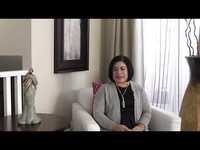 The Misunderstood: Immigrants in Canada This project displays an in-depth personal view of the experiences and challenges immigrants face during their journey to Canada. Through the personal anecdotes from Johanna Bran we discover her immigration story from Nicaragua to Canada, as well as discuss some systemic challenges and misconceptions immigrants face within Canada. “The Misunderstood: Immigrants in Canada” shows how all Canadian immigrants have their own story, but many share the same struggles and barriers living as immigrants in Canada today.
The Misunderstood: Immigrants in Canada This project displays an in-depth personal view of the experiences and challenges immigrants face during their journey to Canada. Through the personal anecdotes from Johanna Bran we discover her immigration story from Nicaragua to Canada, as well as discuss some systemic challenges and misconceptions immigrants face within Canada. “The Misunderstood: Immigrants in Canada” shows how all Canadian immigrants have their own story, but many share the same struggles and barriers living as immigrants in Canada today. -
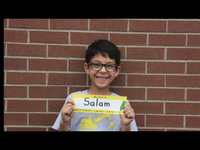 First Day of School: The Story of Iman's Son's First Day of School in Canada
First Day of School: The Story of Iman's Son's First Day of School in Canada -
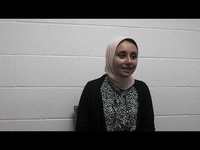 Exploring Multiculturalism as a way of life This portrait follows the story of Marwa Ali, a German teacher in London, Ontario. She was born in Egypt, where she spent her childhood, and had the opportunity to attend a German school. In this video she talks about what her experience has been coming to Canada and how growing up with the Egyptian and German cultures has affected her mindset. After a break, she is now living again in Canada and will explain how her multiculturalism has been an asset and how open-mindedness is important in our modern life.
Exploring Multiculturalism as a way of life This portrait follows the story of Marwa Ali, a German teacher in London, Ontario. She was born in Egypt, where she spent her childhood, and had the opportunity to attend a German school. In this video she talks about what her experience has been coming to Canada and how growing up with the Egyptian and German cultures has affected her mindset. After a break, she is now living again in Canada and will explain how her multiculturalism has been an asset and how open-mindedness is important in our modern life. -
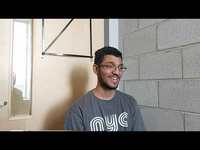 Journey of an Arabic Migration with Loay Loay’s immigration story is a unique one in that he came from another multicultural region in Dubai, U.A.E. Once an 8-year-old boy when he immigrated, he is now a 20 year old student in the field of computer engineering. He explains that integration in Canada was also made easier by his parents as he was enrolled in Islamic elementary and secondary schools. However, he emphasizes how his life and experiences have changed since leaving the Islamic school system and attending Western University and Fanshawe College now.
Journey of an Arabic Migration with Loay Loay’s immigration story is a unique one in that he came from another multicultural region in Dubai, U.A.E. Once an 8-year-old boy when he immigrated, he is now a 20 year old student in the field of computer engineering. He explains that integration in Canada was also made easier by his parents as he was enrolled in Islamic elementary and secondary schools. However, he emphasizes how his life and experiences have changed since leaving the Islamic school system and attending Western University and Fanshawe College now. -
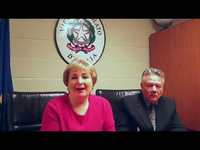 Fostering a Sense of Community: An Immigration Story An Immigration Story
Fostering a Sense of Community: An Immigration Story An Immigration Story -
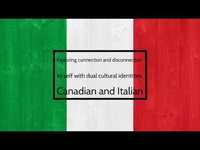 Exploring Connection and Disconnection to self with Dual Cultural Identities: Canadian and Italian The video is focused on the story of John and Marie Meren who are the children of Italian immigrants. John with both of his parents being from Sardinia and Marie being half Canadian. It Starts with brief overview of John’s parent’s immigration story, highlighting where they were from and their motivation to move to Canada (work opportunities). Next the video moves on to focus on John and Marie’s experiences, and how they negotiated their identities in relation to their Canadian and Italian mix. John discusses the languages he was raised with (Italian, Sardinian and English) and Marie explains why she always felt more Canadian and the reasons why she never learnt Italian. They explain how world events like WW2 led to their disconnection from their being Italian at some points. John connects his job as a lawyer and to his Italian heritage. Finally, they talk about the trip they took to Italy and how it impacted them and helped to define their connection with being Italian
Exploring Connection and Disconnection to self with Dual Cultural Identities: Canadian and Italian The video is focused on the story of John and Marie Meren who are the children of Italian immigrants. John with both of his parents being from Sardinia and Marie being half Canadian. It Starts with brief overview of John’s parent’s immigration story, highlighting where they were from and their motivation to move to Canada (work opportunities). Next the video moves on to focus on John and Marie’s experiences, and how they negotiated their identities in relation to their Canadian and Italian mix. John discusses the languages he was raised with (Italian, Sardinian and English) and Marie explains why she always felt more Canadian and the reasons why she never learnt Italian. They explain how world events like WW2 led to their disconnection from their being Italian at some points. John connects his job as a lawyer and to his Italian heritage. Finally, they talk about the trip they took to Italy and how it impacted them and helped to define their connection with being Italian